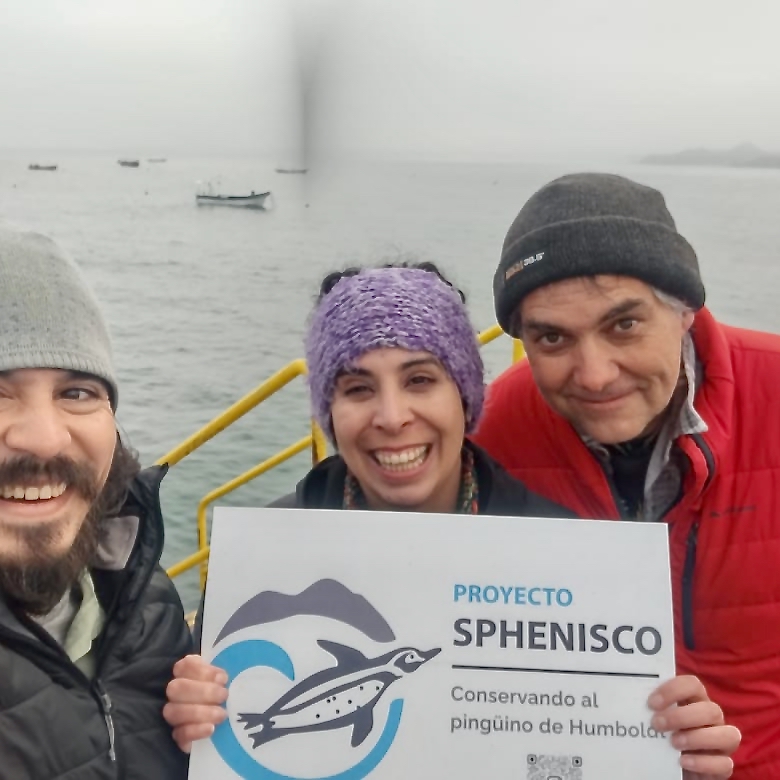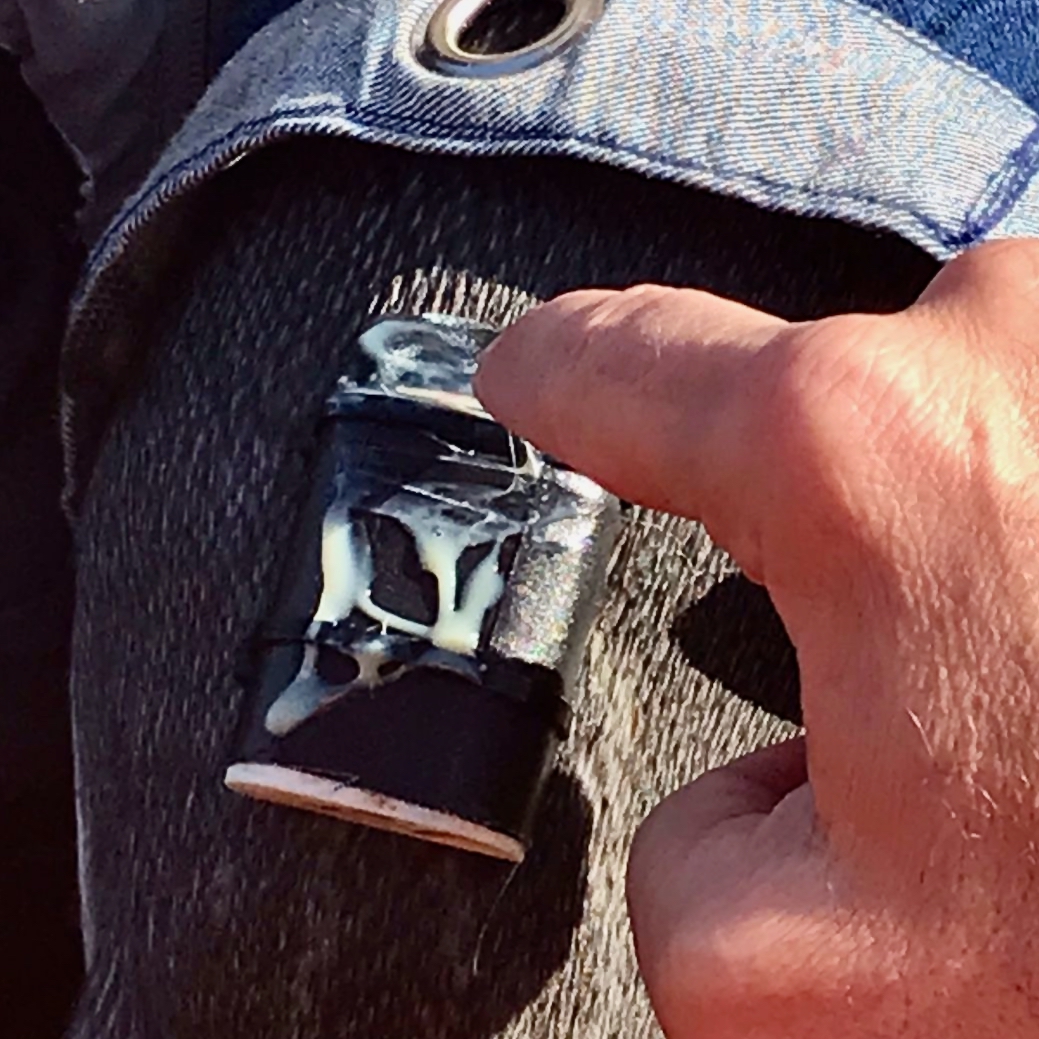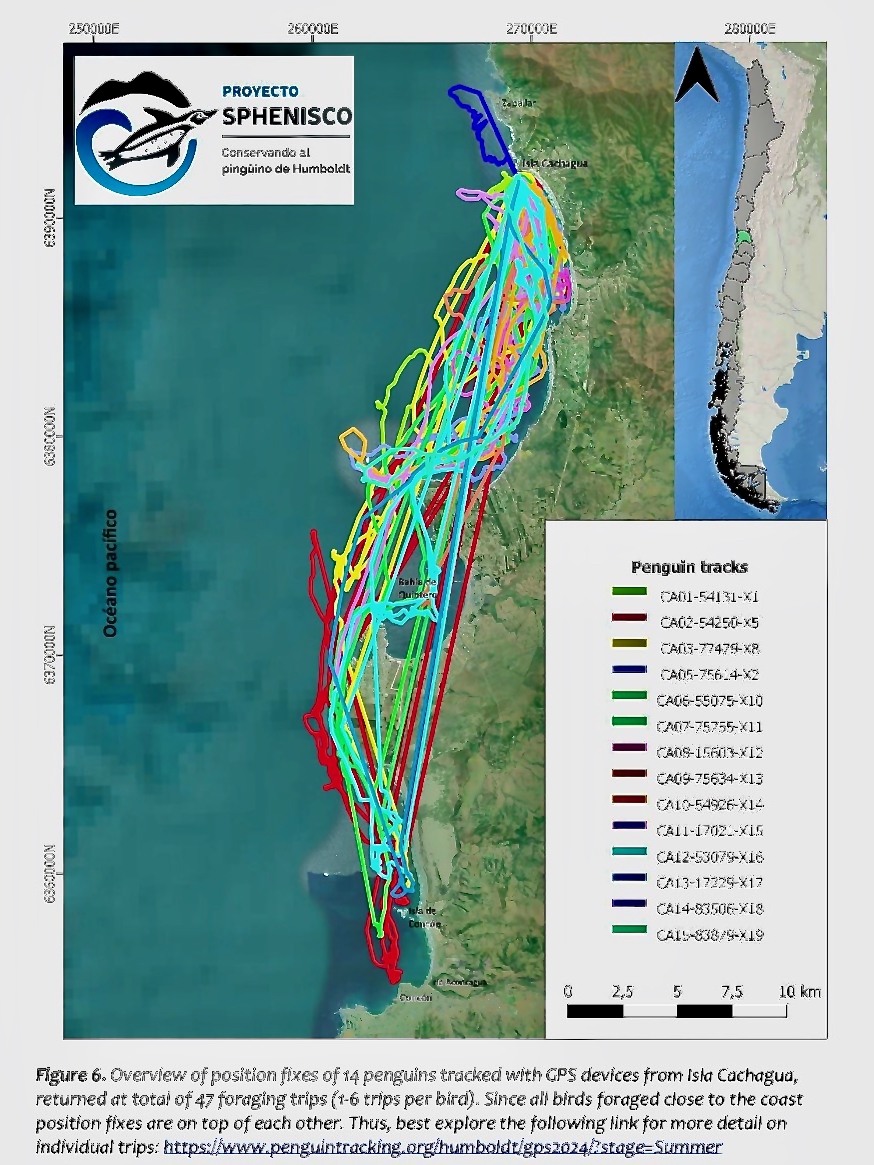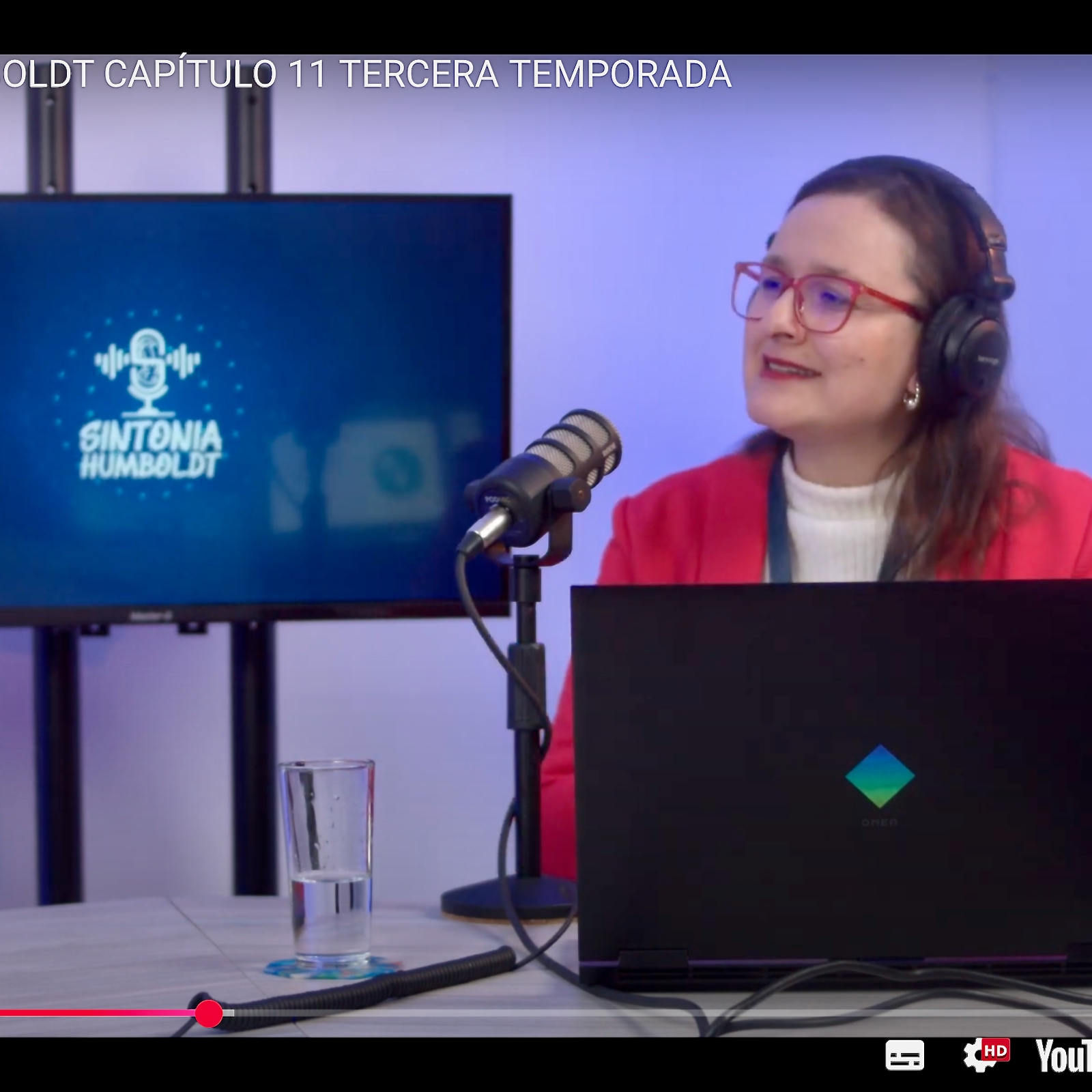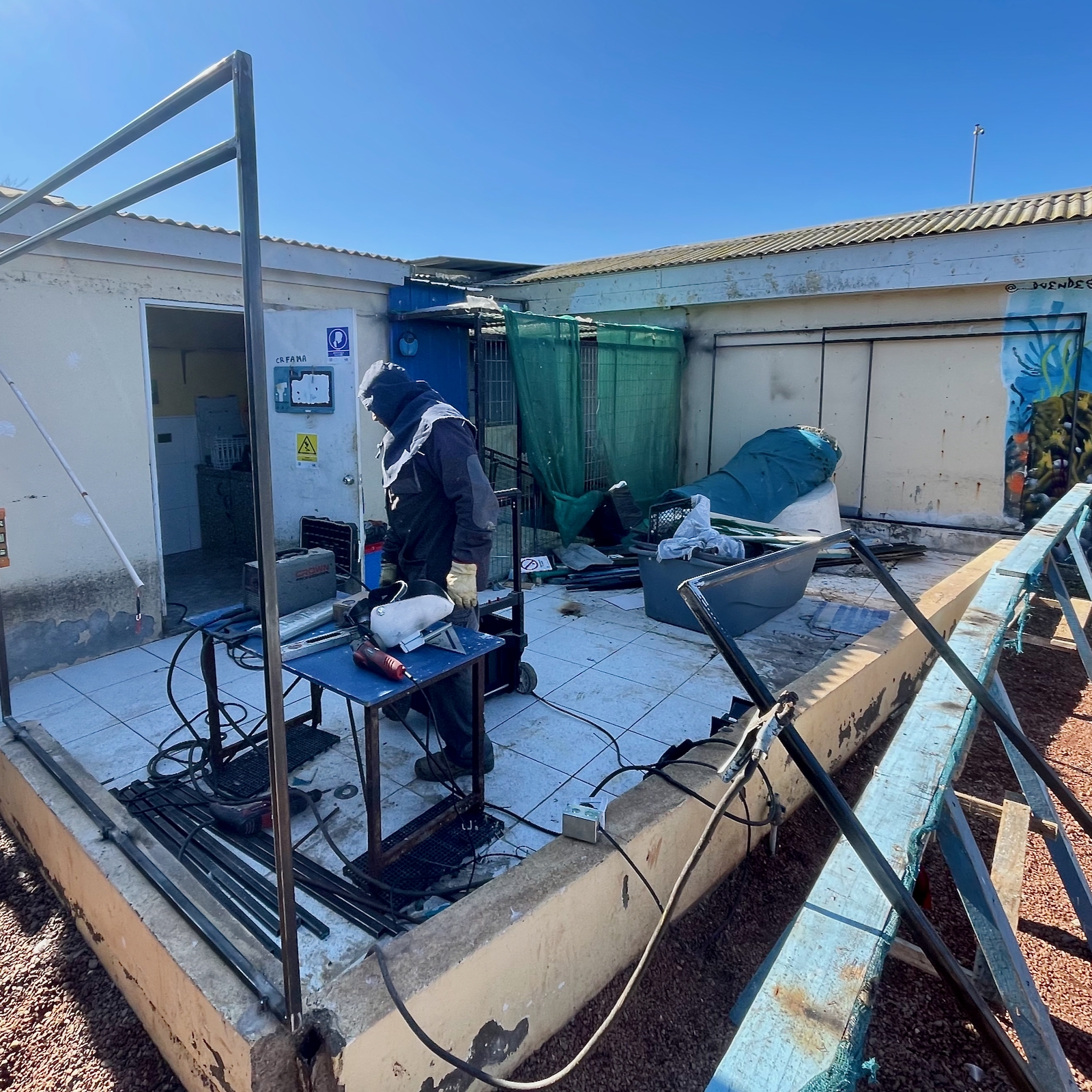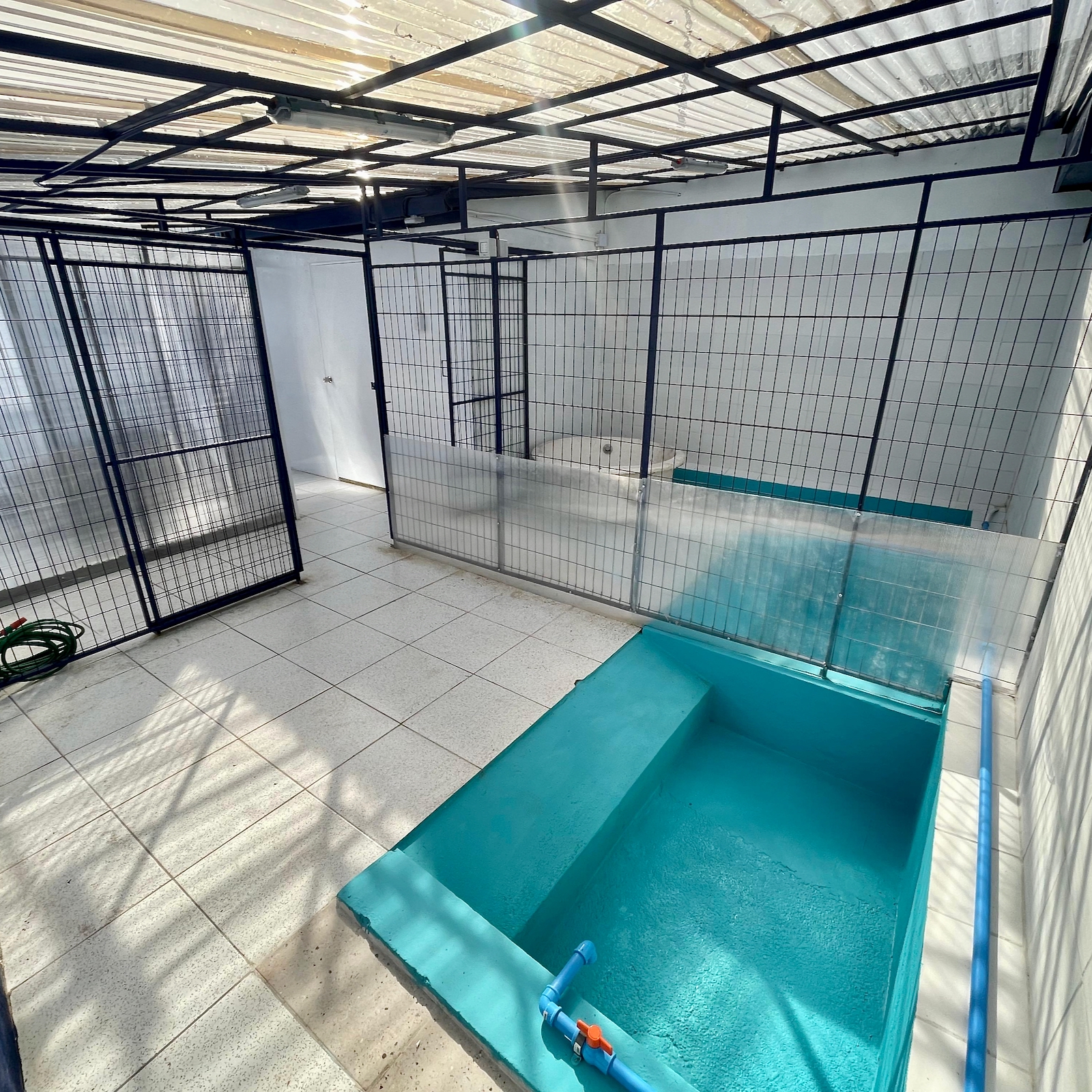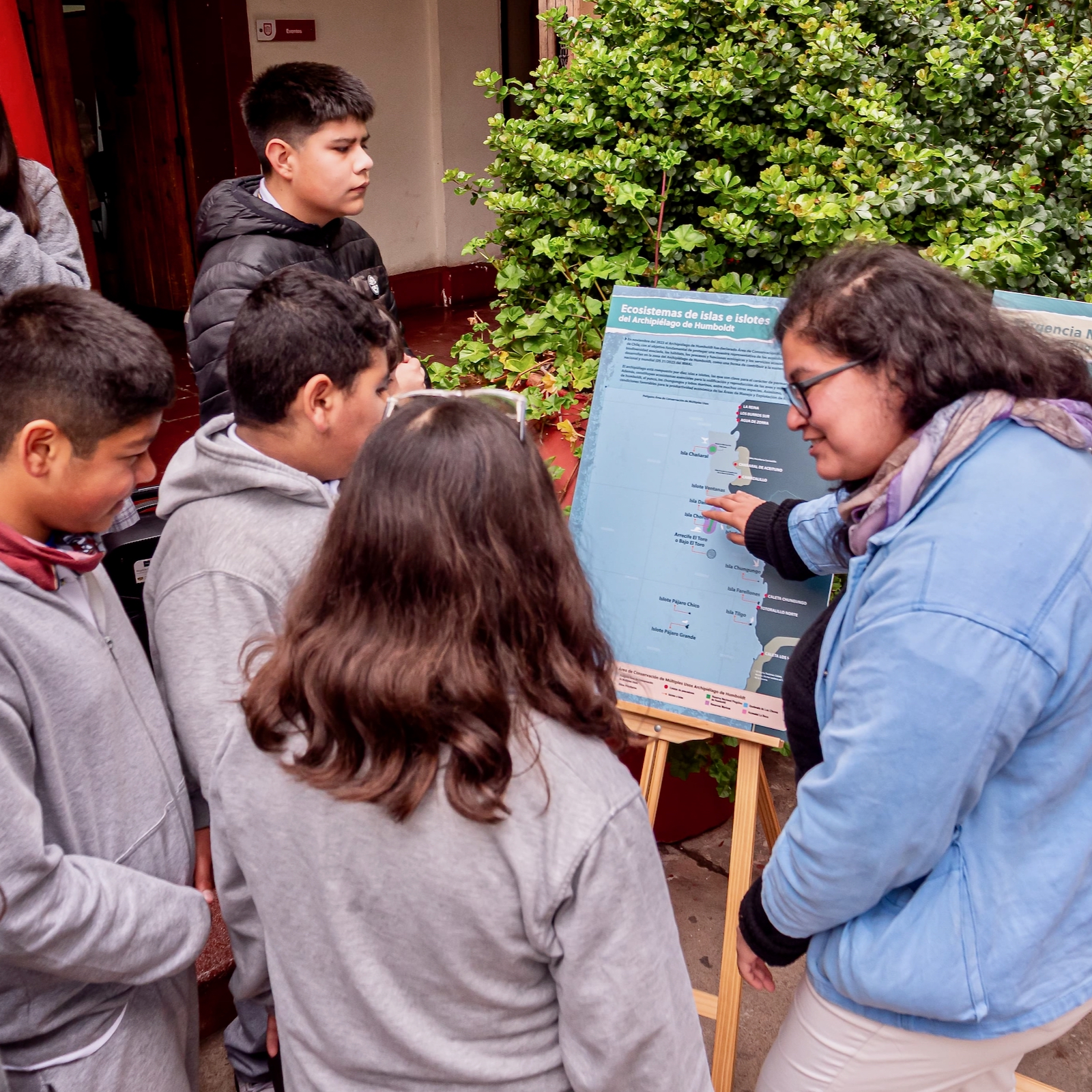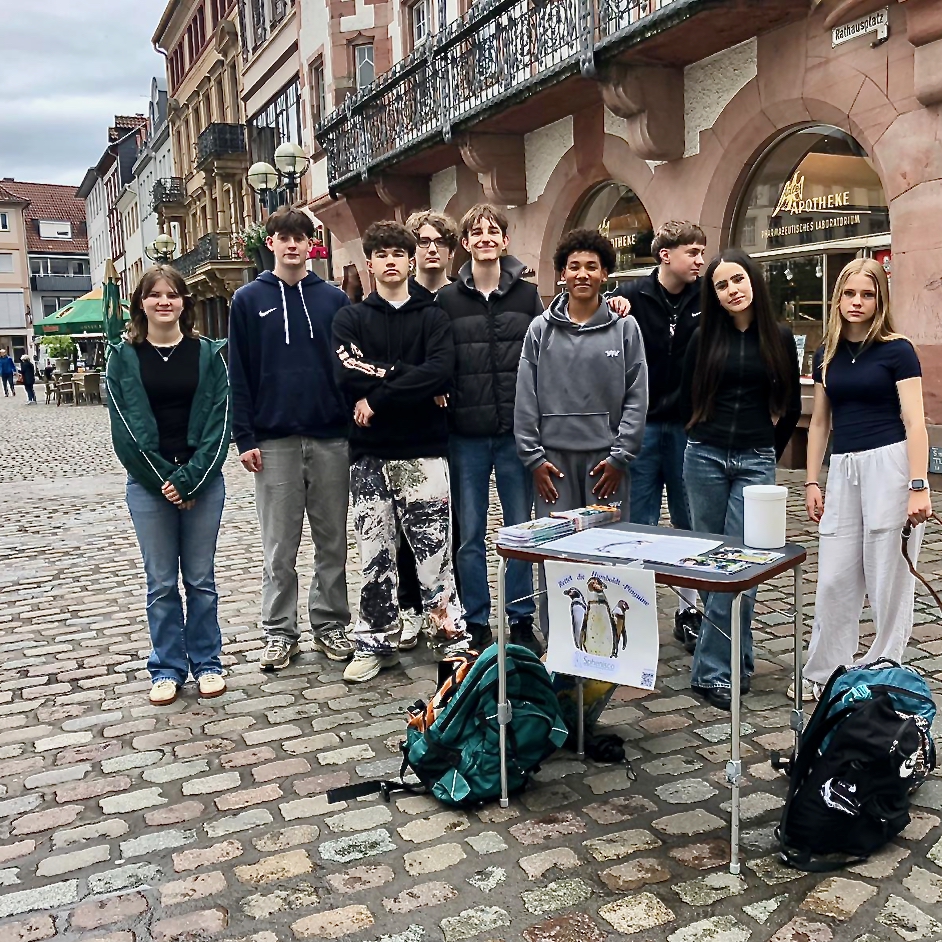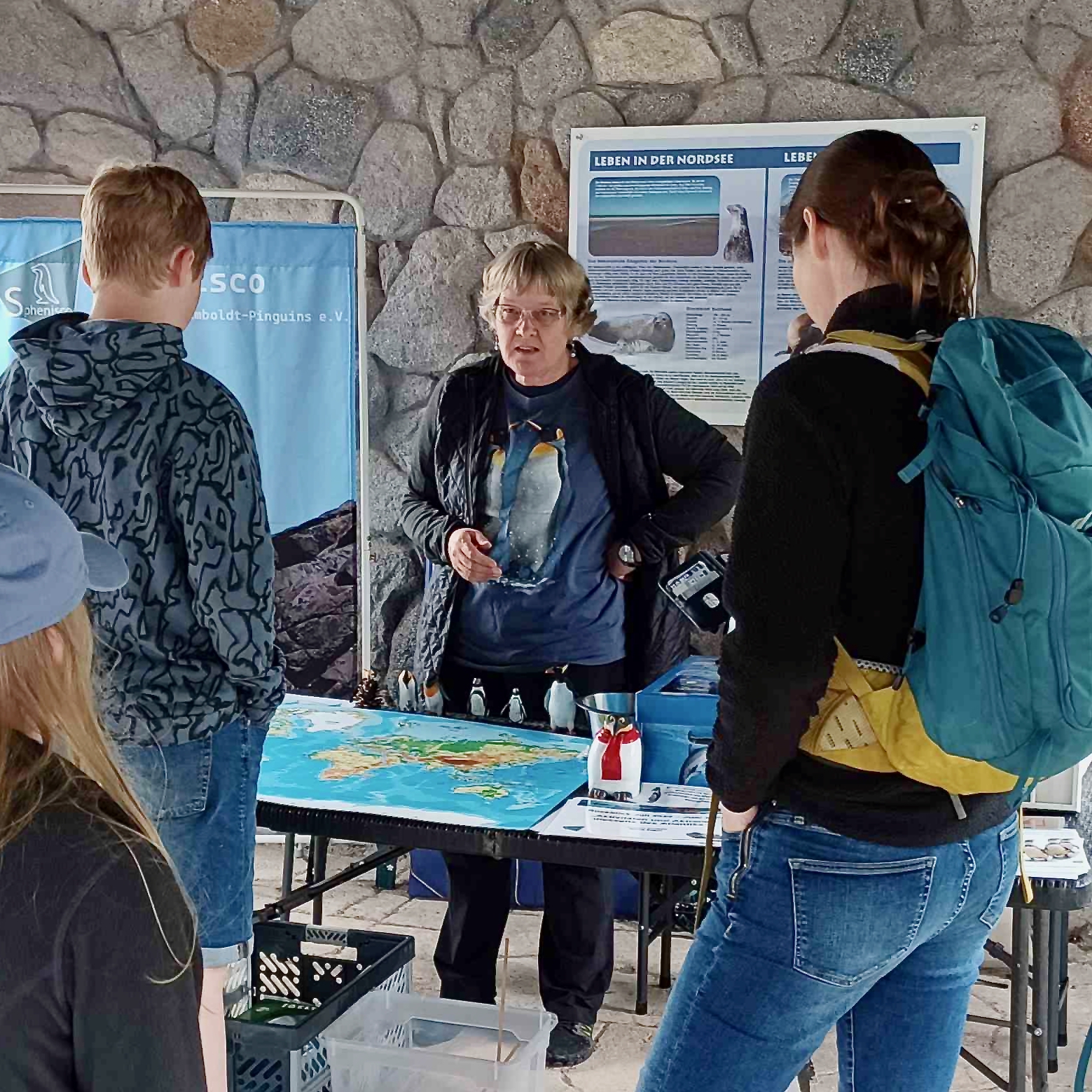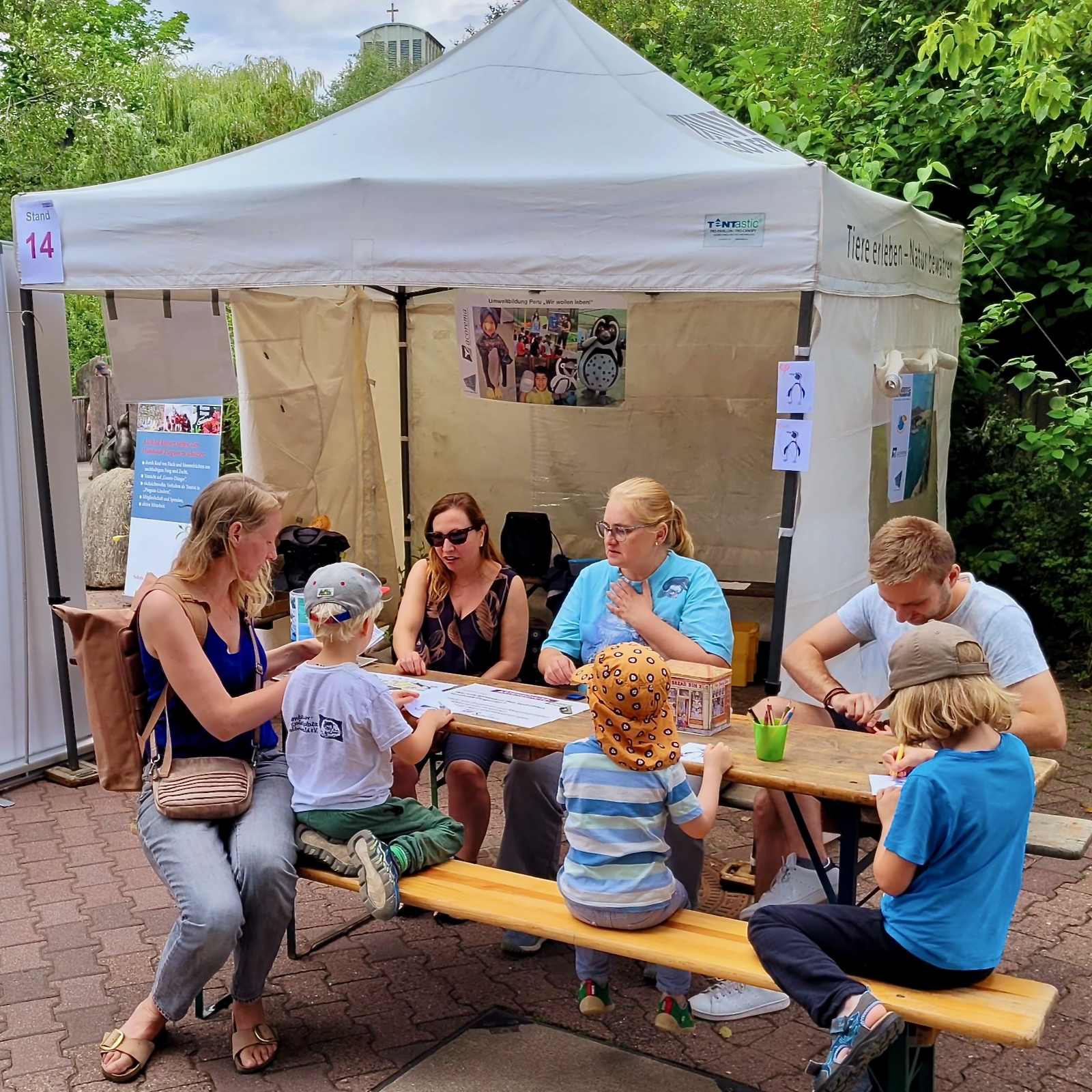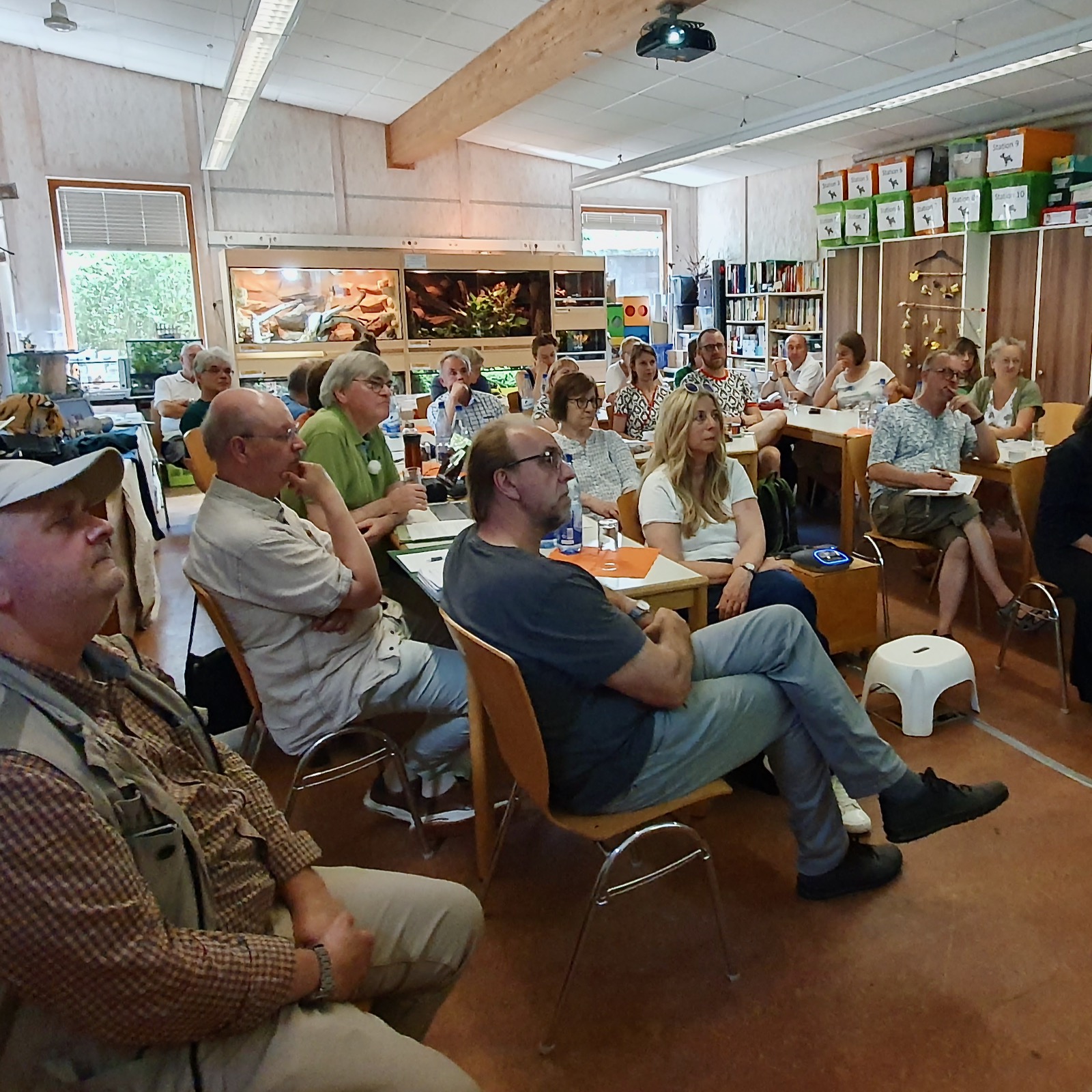7th of August 2025
C H I L E
+++Research Population, breeding success and foraging+++
In May and June, Dr Alejandro Simeone's team once again studied the population and foraging behaviour on several Chilean breeding islands. Thomas Mattern (University of Otago, New Zealand) led the foraging studies and reported on 15th of June: "After a few intense weeks, I have now returned to New Zealand from Chile. The first week and a half of my stay was difficult due to the weather, but in the following three weeks, the work picked up speed. ... Here is a brief summary:
Between 18th and 26th of June, we were able to attach a total of 10 GPS loggers to breeding penguins on Islote Pájaros Niños in Algarrobo. We have been able to collect six devices so far. Each device recorded data for between 14 and 18 days – a very satisfactory data yield. All birds showed consistent and very similar hunting behaviour. They swam south to search for food on the seabed in a fairly clearly defined area off Santo Domingo (https://ptx.lat/hug25).
We tried to use a PenguCam to find out what attracts the penguins to this particular spot, but the bird equipped with the camera did not leave its nest for at least four days. So we will have to wait until the (southern) summer. Two loggers were removed from the penguins' plumage and were probably lost at sea. In the case of two other loggers, the brood failed during the equipment period, which unfortunately significantly reduces the chances of recapturing these birds.
On 28th of June, we were able to land on Isla Cachagua and attach another 10 GPS loggers to breeding penguins. Unfortunately, the weather conditions have been poor since then, so it has not been possible to return to collect the devices. This week, the weather looks set to improve, and the team plans to spend a few days on the island to retrieve the loggers.
From 1st to 5th of July, we were on Isla Choros – originally with the aim of spending 8 to 10 days there to collect further GPS data. However, it quickly became apparent that the population there continues to be exposed to difficult environmental conditions. We found very few active nests (23) and quite a few abandoned clutches. Most of the active nests contained freshly laid eggs, indicating that the penguins had started breeding 6 to 8 weeks later than usual this year. Under these circumstances, we did not want to cause any additional stress and therefore limited ourselves to thorough nest mapping.
I also trained Max (Maximiliano Daigre) and Paulina (Arce) and their team in the use of drones. This will enable us to carry out reliable moulting surveys in future. More on this in my report."
The aforementioned report, ‘Humboldt Penguin Research Chile, Autumn/Winter 2025 – Report on the Field Season June–July 2025’ by Thomas Mattern, is now available and will be published on the website shortly. The project is funded by the Karlsruhe Zoo Species Conservation Foundation, Dresden Zoo and the Hagenbeck Zoo Support Association.
+++Study on the migration of Humboldt penguins+++
In collaboration with the Antarctic Research Trust, Thomas Mattern and Chilean researchers attached five satellite transmitters to breeding Humboldt penguins on Cachagua Island. The aim of the study is to investigate the migrations of Humboldt penguins outside the breeding season. Although Humboldt penguins are considered a migratory species, similar to Magellanic penguins, this has never been systematically studied before. This study is the first attempt to find out whether Humboldt penguins move far away from their breeding island after their chicks have fledged or whether they remain nearby.
Unlike GPS loggers, satellite transmitters only send a few position data points per day. However, they can operate for up to six months and provide valuable long-term data.
Since 23rd of July 2025, all five transmitters have been regularly transmitting position data approximately every six hours. So far, the penguins have shown similar movement patterns to those recorded in the GPS data, with foraging towards Valparaíso. The chicks are expected to fledge in mid-August, marking the start of the most exciting phase of tracking. The migrations of the five penguins can be followed at the following link: https://www.penguintracking.org/humboldt/sat2025/
(See also the report ‘Humboldt Penguin Research Chile, Autumn/Winter 2025’ by Thomas Mattern on these pages.)
+++Humboldt Archipelago Marine Protected Area+++
Since May, the secretariats of the Ministry of the Environment in the Coquimbo and Atacama regions have been organising the development of a management plan for the Humboldt Archipelago Marine Protected Area. A professional consulting service is conducting workshops with citizens and interest groups such as fishermen and tourism service providers, with relevant authorities and affected scientists, as well as NGOs. Opponents of environmental protection are spreading fake news to delegitimise citizen participation. This is hindering the sustainable and equitable development of the community of La Higuera. (See article ‘Marine Protected Area – For Natural and Cultural Heritage!’ on these pages)
+++Sintonia Humboldt video podcast+++
At the beginning of May, Fundación Sphenisco Chile launched the third season of the Sintonia Humboldt video podcast. Carla Parra and Rodrigo Muñoz, the hosts, welcomed Josué Claudia Accini, the representative for natural resources and biodiversity at the regional branch of the Ministry of the Environment in the Coquimbo region, to the premiere. Carla Parra then spoke with Nancy Duman and Jean Paul Faure from the Sphenisco Chile Foundation. On 26th of May, the hosts interviewed Josué Ramos, a diver and shellfish fisherman from the municipality of La Higuera.
In June and July, the two presenters spoke with the following guests:
- On 2nd of June, with history professor and writer José Aguilera Martínez about his latest book, ‘Comuna de La Higuera, su gente, su historia’ (The Municipality of La Higuera, its People, its History).
- On 9th of June, Carla Parra and Rodrigo Muñoz interviewed Macarena Olivares, president of the Chungungo Turismo Azul group. She is also a well-known gastronomic entrepreneur in the region.
- On 16th of June, the hosts of Sintonía Humboldt spoke with Patricio Ortiz, a tourism entrepreneur from Chañaral de Aceituno, about his collaboration with scientists researching whales and dolphins.
- On 25th of June, Carolina Tello, representative of the Coquimbo region, was a guest. Carla Parra and Rodrigo Muñoz spoke with her about the importance of the archipelago and the work that needs to be done in the community of La Higuera.
- On 30th of June, Juana Vergara, a prominent leader of the Changa community of the Humboldt Archipelago, visited Sintonia Humboldt and spoke about the importance of fishing and the wealth of this area for the Changa community.
- On 7th of July, the hosts interviewed Rodrigo Cristián Bustos, an engineer specialising in air quality.
- No video podcast was released on 14th of July.
- On 21st of July, Carla Parra and Rodrigo Muñoz spoke with Dr Marcela Gatica, a doctor specialising in immunology and biochemistry. She spoke with the two presenters about Chagas disease, which is transmitted by the vinchuca bug.
- To conclude the third season, on 28th of July, the hosts spoke with Señora Pía Castillo about spatial planning. Señora Pía Castillo was the regional representative of the Ministry of Economy in the Coquimbo region for some time.
+++Coquimbo Rescue Station+++
In May of this year, the Catholic University of the North, Sernapesca (fisheries authority), Sphenisco and the NGO Conservación Humboldt decided to renovate the marine animal rescue centre on the university grounds and operate it jointly. The project is supported by Frankfurt Zoo, Halle Mountain Zoo and Dresden Zoo.
On 23th of June, the service provider Cofre began the renovation work and was able to complete it by 5 August. (See ‘Renovation of the Coquimbo rescue station completed’ dated 8 August 2025)
+++Photo exhibition about the Humboldt Archipelago+++
After lengthy and intensive preparations, the photo exhibition ‘Source of Life for Humanity’ opened on 5th of August. Under the motto ‘Let's explore the archipelago!’, Daniela Norambuena Borgheresi, Mayor of La Serena, and Nancy Duman Brito, President of the Sphenisco Chile Foundation, invited guests to the city administration offices. (See ‘La Serena opens travelling exhibition...’ from 5 August 2025 on these pages)
P E R U
+++Research on breeding success+++
Since June 2024, Acorema has been studying the population and breeding success on the Ballestas Islands near Paracas, southern Peru. The project was originally scheduled to end at the end of May. In recent months, rough seas have repeatedly prevented research from being carried out. For this reason, the research project was initially extended until 31 August and then again until 30 September. The study is funded by Frankfurt Zoo and Marlow Bird Park.
+++Research on foraging in Peru+++
Since 2022, Dr Ursula Ellenberg and Thomas Mattern have been studying the foraging behaviour of Humboldt penguins on the Chilean breeding islands of Choros, Cachagua and Pájaros Niños. Next year, they plan to study the conditions and foraging behaviour on Peruvian breeding islands as well. Ursula Ellenberg and Thomas Mattern (University of Otago, New Zealand) are very interested in extending their research on foraging to the northern range of Humboldt penguins. However, they will not have time to do so until 2026. Señora Milagros von Acorema is also very interested and willing to make the necessary preparations and support the New Zealand researchers.
E U R O P E
+++Commitment by Landau schoolchildren+++
In April, pupils from the Landau Montessori School sold postcards for Sphenisco in the pedestrian zone (see photo). The pupils designed the postcards themselves using their own photos from the zoo. After some initial shyness, sales in the pedestrian zone went really well and raised a considerable amount of money, which was further increased by proceeds from sales during breaks. The unusual project was supervised by teacher Carolin Reffert-Schmitt.
+++Review of action days+++
Species Conservation Day in Osnabrück
On 15th of June, Osnabrück Zoo held its second Species Conservation Day. Meike Kagel (Bochum Zoo and long-standing member of Sphenisco) writes: "On Sunday, 15th of June 2025, Osnabrück Zoo held its second Species Conservation Day with a wide range of activities such as activity stands, a rally and lectures on the topic of species conservation. The day was excellently organised by Diana Reuvekamp, event manager at Osnabrück Zoo.
From 10 a.m. to 4 p.m., visitors were made aware of the need to protect endangered species, with the aim of mobilising them to support biodiversity conservation. Over a quarter of species are globally endangered. That is why zoos are committed to nature and species conservation. Osnabrück Zoo donated two euros from every admission ticket sold on that day. The proceeds went to the participating animal and species conservation organisations.
Sphenisco participated with an information stand to draw attention to the ever-increasing threat to Humboldt penguins and their habitat. The information stand was supervised by Meike Kagel. A wide range of information material was on offer, including penguin feathers and educational games for children, which provided information about the habitat, lifestyle, distribution and biology of Humboldt penguins. (Meike Kagel)
Frankfurt Zoo
On 13th of July, Frankfurt Zoo once again organised a species conservation day. Sphenisco was represented once more with an information stand, which was manned by Klaus Blumer, Elke Gerriets, Nicole Kambeck, Karin Kalbfleisch and Louis Condit. Nicole Kambeck reported: "To the children's great delight, Elke from the Frankfurt Sphenisco team had brought along colouring sheets and coloured pencils. The homemade penguin cookies were also a big hit at the stand. Humboldt penguins continue to be very popular with children and adults alike. Visitors were very interested in learning more about the causes of endangerment. Every individual can contribute to the protection of these lovable animals.
Not only was the pleasant, sunny weather particularly enjoyable, but it was also great to see that the Frankfurt Sphenisco team is growing. (It currently consists of Nicole Kambeck, Elke Gerriets, Karin Kalbfleisch, Louis Condit and Klaus Blumer). This year, there were five volunteers at the stand. The team had a lot of fun answering questions from children and adults about the penguins and the association. Further meetings of the Frankfurt Sphenisco team are now planned, which will certainly lead to further actions to protect the Humboldt penguins." (Nicole Kambeck)
Hellabrunn Zoo
The Hellabrunn Action Day ‘Climate, Animals & Us’ on 18th of July 2025 focused on climate change and the threats to flora and fauna. Many organisations presented themselves on the zoo grounds. Species conservation ambassadors were on duty at several stands for the zoo, e.g. at a craft stand for children, at an information stand where the zoo's species conservation projects were presented, including the work of Sphenisco. Children also had the opportunity to take part in a quiz rally, where they could learn something and also win prizes. At the end of the day, the Hellabrunn species conservation ambassadors went home tired but thoroughly satisfied. (Francisco Ruiz)
+++Penguin Day at the Mikado Cultural Centre+++
German Contreras and Katja Resch are planning a Penguin Day at the Mikado Cultural Centre on 9th of November 2025, together with Nicole Bertram, Werner Knauf, Rosemarie Klug and Jeannine Schützendübe. As last year, the cultural centre in the north of Karlsruhe is making its premises available free of charge. A programme is being prepared with penguin films, face painting, craft activities and information stands.
+++General Meeting+++
Sphenisco's annual general meeting took place on the last Saturday in June (see article ‘General Meeting in tropical temperatures’, 8 July on these pages).
Materials for environmental education
At the general meeting, participants were very impressed by the environmental education and fantastic media in southern Peru. Some members working in education expressed a desire to use posters, flyers and small brochures for their work. Werner Knauf conveyed this request to Señora Milagros from Acorema. Acorema has granted permission for the use of the materials and is even willing to provide templates without Spanish text. However, Señora Milagros would like to be informed about the context and manner in which the materials will be used. Interested members can contact
+++Donations, donations, donations+++
In June and July 2025, the following individuals and institutions donated to Sphenisco's species conservation projects: Rostock Zoo, Kathrin Ballenthin, Genoni Dante on behalf of Babs Yves, Olha Lytvynenko, Osnabrück Zoo (donations from the 2nd Species Conservation Day), Dudley Zoo England, Chris Lawrenz.
W. K.
notes
For better readability, the generic masculine form is used in this article. Unless otherwise indicated, the terms used in this article refer to all genders.
translated by Claudia Fawer



